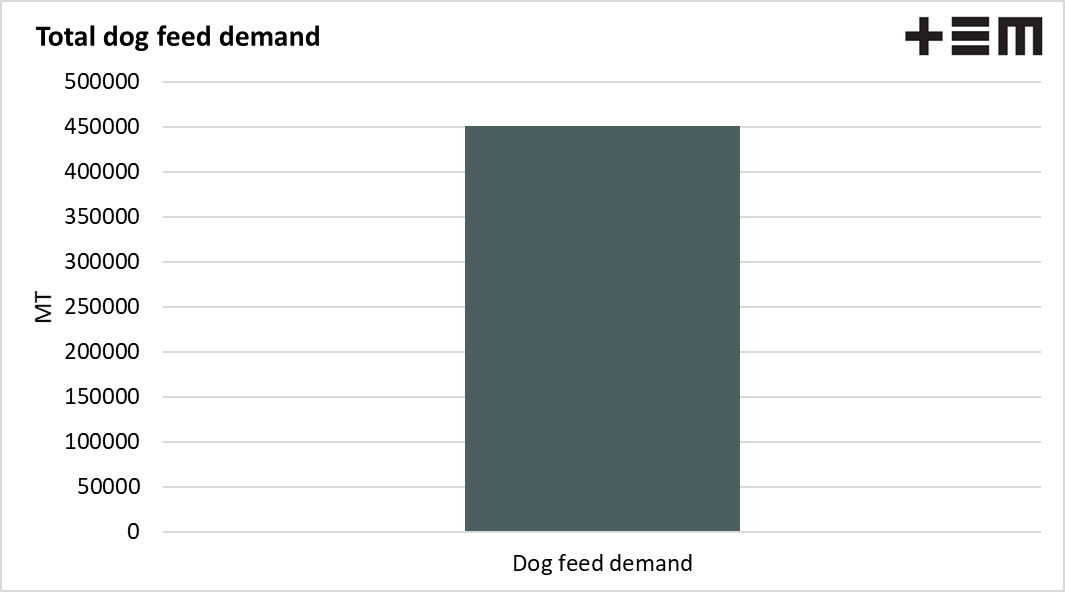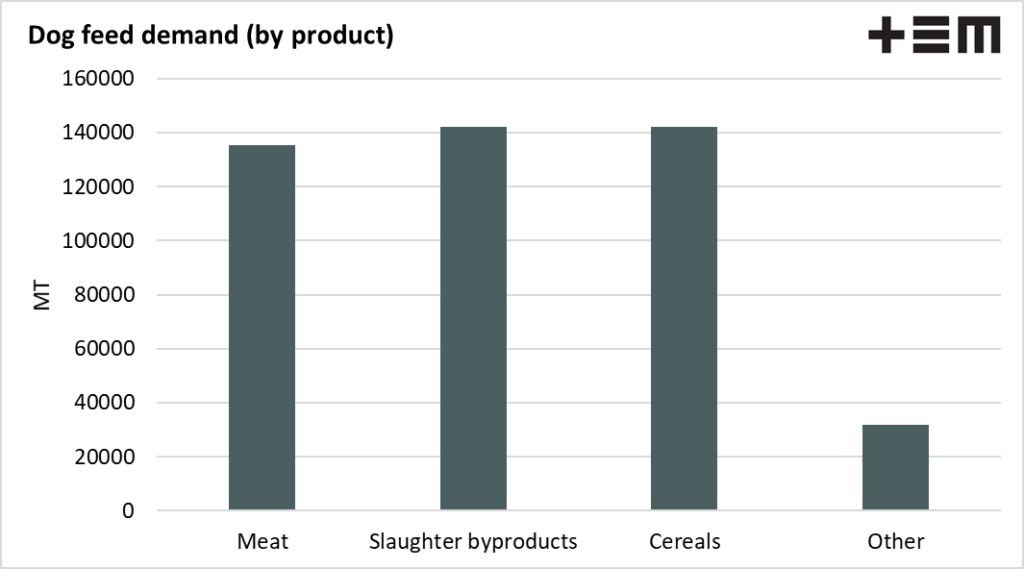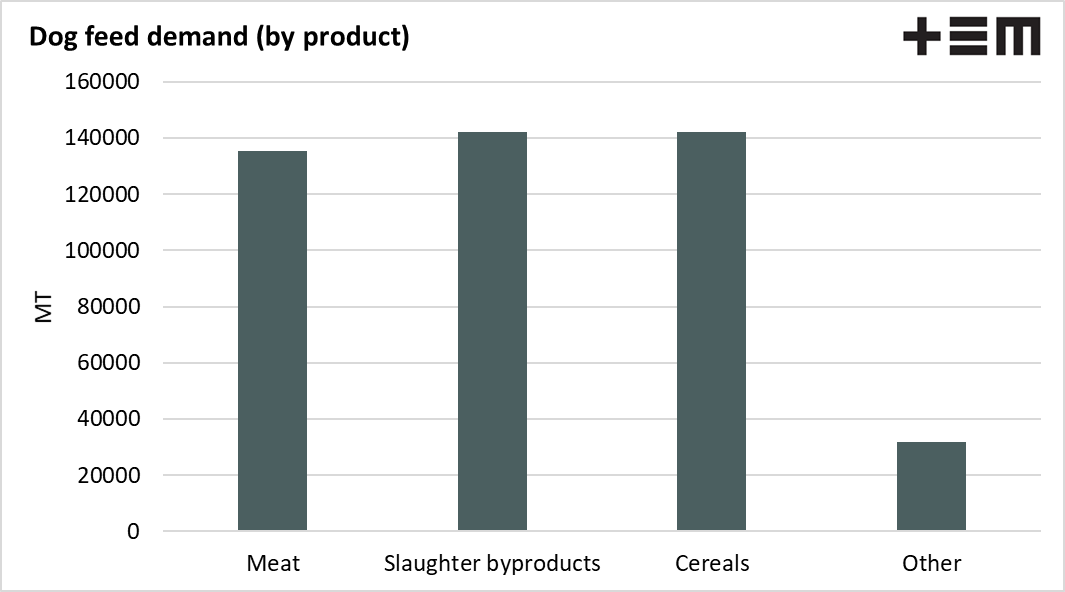Give a dog a bone (or some grain)

The Snapshot
- There are 5.1 million dogs in Australia.
- The average weight of a dog is 22kg.
- The daily feed demand for the average dog is 242g per day, based on a feed demand of 11g per kg of body weight.
- The theoretical hound demand for feed in Australia is 451kmt per year.
- This is comprised of 142kmt of cereals, 142kmt slaughter byproducts (blood/bone meal) and 135kmt meat.
The Detail
In recent weeks I have been travelling around South Australia with Grain Producers South Australia, providing workshops on grain markets. This had focused a lot on supply and demand, as this is the primary driver of pricing levels.
Demand is the volume of grain for export, but also the requirement of local consumers. This could be pig farmers, cattle feedlots or pizza manufacturers. One of the often forgotten about animals when it comes to consumption is mans best friend. So it is worthwhile providing an update on how much demand dogs create.
To determine the value, we have to do a little digging to create a methodology for working out the feed demand.
There are approximately 5.1m dogs in Australia, 1 for every 5 people, according to a 2019 study by Animal Medicines Australia. Just like any other animal, such as a pig or chicken, they eat a certain amount of food per day, based on their weight. However, we know that dogs can vary significantly in size; a great dane will eat more than a shitzu.
The average weight of a dog in Australia turns out to be approximately 22kg. The feed requirements for dogs are based on a conversion of grams of food per kg of bodyweight. A generally accepted feed requirement is 11g per kg of body weight.
At an average dog size of 22kg, this amounts to 242g of food per day. Across our average population of dogs, this is 451kmt of feed per year. This isn’t a volume that should be sniffed at.
We can further refine the composition of feed to a ratio of 70% dry to 30% wet (canned meat) basis. This information is based on industry contacts information and experience working in the animal feed industry. The dried ingredients in dog food are also composed of 45% cereals and 45% slaughter byproducts (blood/bone meal).
Whilst this article could be considered a novelty piece and maybe a bit ‘ruff’, it does contain important information. Close to half a million metric tonnes of demand for feed is not inconsequential. Ultimutt-ly the mutt is an important consumer for both cereals and meat (especially by products).
In addition, the good thing about dog food demand is that it is generally inelastic. The dog will always be fed!
This is a theoretical model for dog food demand, based on all animals being fed store-bought feed. It is important to note that not all dogs eat store-bought food, with some receiving scraps etc.




